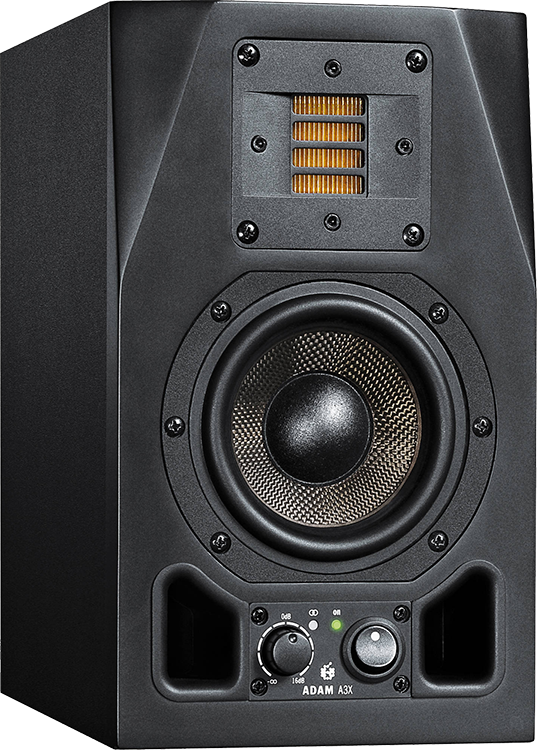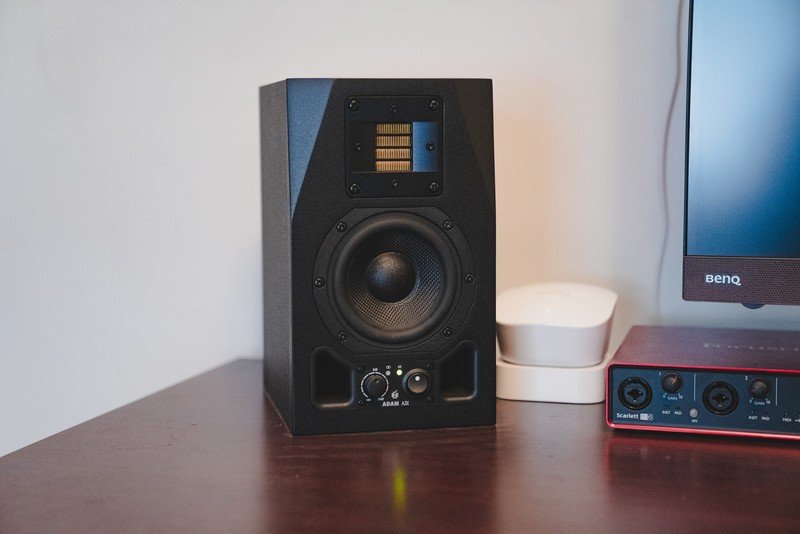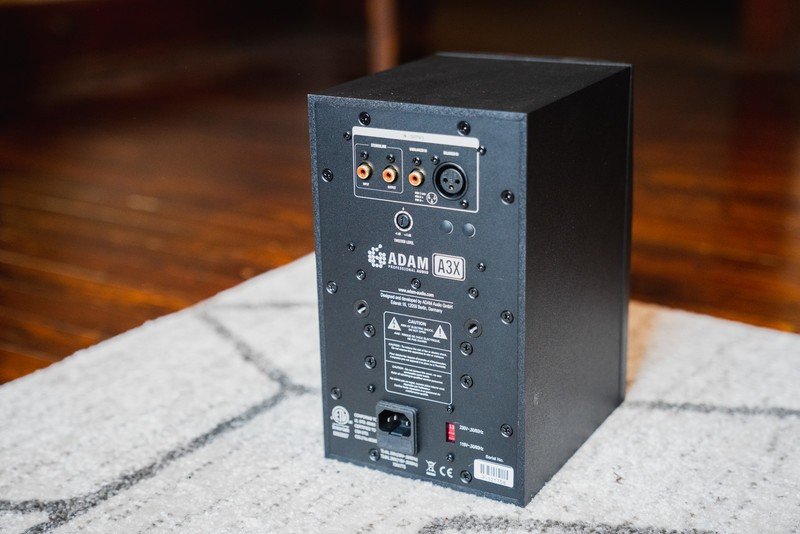The Adam A3X speakers are the work-from-home accessory I can't go without

I'm a big advocate for listening to music while you work. Music can put you in a better mood, and there's research to suggest that ambient and instrumental music in particular (or at the very least, music with minimal lyrics) can help keep you focused and make you more productive.
There are all sorts of ways to listen to music, and those in shared spaces will likely gravitate towards enclosed headphones. But if you have a bit of personal space and don't need to worry about disturbing others, by far my favorite way to consume audio is through studio monitors — those large, actively powered speakers typically used for music production.
For years now, the ADAM A3X studio monitors have been my go-to solution. They aren't the cheapest speakers around, nor are they the smallest, but believe it or not they're actually considerably smaller than most studio monitors, and deliver outrageously good sound quality.

ADAM Audio A3X
The A3X studio monitors may be the entry level option in Adam Audio's AX series, but they deliver terrific sound that fundamentally changes how you listen to music and other types of audio.
To be clear, this isn't a cheap setup by any means. You need two speakers to achieve a stereo effect, of course, and while I was lucky enough to snag mine during a good sale a few years back, a pair will typically run you a whopping $700. You should also strongly consider picking up some isolation pads like the Auralex Acoustics pads to keep the vibrations from the speakers from rumbling through your desk.

A proper setup with these speakers is by no means cheap, but it's well worth it for the musician or audiophile.
You'll also need an audio interface to run audio into the speakers, since the A3X speakers accept balanced XLR audio. For that, I've been using the Focusrite Scarlett 6i6, which pulls triple duty by also serving as an interface for my guitars and microphones.
Get the latest news from Android Central, your trusted companion in the world of Android
So why the expensive and elaborate setup? Well, while I'm certainly not a music producer by any stretch, I do play and record music regularly, and I run the entire signal chain of my guitar through my computer. These days, plugins and digital effects have gotten so good that I don't even own a real amp anymore; I plug my guitar into the 6i6, open Logic Pro X, and use Neural DSP's incredible plugins for all of my amps and effects.
Since I don't have a traditional amp or accompanying speaker cabinet these days, it's important that I'm still able to hear what I'm playing accurately, and the ADAM A3X speakers are absolutely perfect for the job. Having two speakers lets me hear any of the stereo effects in my digital rig, and studio monitors by nature don't try to color the profile of your audio — what I'm hearing through these speakers when I play is cleaner and more accurate than I'd get from any guitar cab or passive speakers.


This isn't a review of the speakers, so I'm not going to go into the fine details of exactly what makes these studio monitors better than alternatives like the Yamaha HS5 or KRK Rokit 5; I haven't tested nearly enough of them myself to feel qualified to make those assessments. But ADAM Audio is known for delivering incredible audio quality, and the A3X sounds incredible to my ears, while its 4.5-inch woofer lets it occupy minimal space on my desk.
Casual listeners might actually prefer cheaper passive speakers.
I definitely wouldn't have bought these studio monitors just to listen to music while I'm working; there are far cheaper options out there that would work just as well, and a typical listener might not even like the flat frequency response that comes with the territory. Studio monitors are meant to be used as reference speakers in mixing and mastering scenarios, where you want to hear things as accurately as possible. Traditional speakers, while technically less accurate, appeal to most casual listeners since they generally lift the low and high frequencies for a punchier sound.
But since they're already on my desk, I love blaring music through these speakers all day while I'm working. Even with Spotify's compressed audio, these speakers let me hear nuanced details in my music that I had never previously picked up through over-ear headphones; it quite literally lets me experience my music in new and exciting ways, which lets even music I'm already intimately familiar with act as a new spring of inspiration.

I'm not sure if these speakers or the music I'm playing through them actually, neurologically improves my productivity, but they certainly give me something to look forward to when I sit at my desk. I love putting entire albums on, and challenging myself to see if I can finish an article before the last track is over. It keeps me sane through an otherwise silent session of color grading in a video project. It makes me want to finish work so that I can grab my guitar and make my own music.
These speakers might not be essential to getting work done, but I don't want to work without them.

My most used desktop accessory
The A3X studio monitors may be the entry level option in Adam Audio's AX series, but they deliver terrific sound that fundamentally changes how you listen to music and other types of audio. They're relatively small and don't take up too much on a desk, but pack large, clear sound.

Hayato was a product reviewer and video editor for Android Central.
